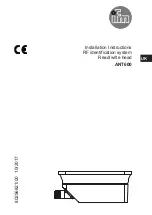
CAUTION
* Only wire the neutral terminal if it is available on both the [Busbar] and [Source]. If neutral is only wired on one side of the
equipment it causes a difference in the reference of a star connection. The difference causes an error during
synchronisation.
13.5.3 Voltage measurement characteristics
The ACM has two sets of terminals for voltage measurement. The first set of terminals (1 to 4) measures the voltage on the busbar.
The second set of terminals (5 to 8) measures the voltage from the source. The ACM uses these measurements for logging, alarms
and protective functions. For power functions, the second set of voltage measurements (terminals 5 to 7) and the current
measurements (terminals 9 to 14) from the ACM are used together.
For 3-phase systems, you do not have to connect and measure the neutral lines (terminals 4 and 8).
13.5.4 Current measurement characteristics
The ACM measures the current, then uses these measurements for logging, alarms and protective functions. For power functions,
the second set of voltage measurements (terminals 5 to 7) and the current measurements (terminals 9 to 14) from the ACM are
used together.
You do not have to connect and measure the 4th current input (terminals 15,16). You can measure the neutral line, the earth current
or a custom current with the 4th current input.
13.6 Alternating current module ACM3.2
13.6.1 Alternating current module ACM3.2
The alternating current module 3.2 measures the phase currents on the consumer side and neutral side of a generator. The ACM3.2
uses the measurements to detect phase-to-phase faults or phase-to-earth faults in earthed generator systems. The protection
consists of:
•
A stabilised stage that uses a dual slope operating characteristic. This current restraint approach is also known as biased
differential protection.
•
A high set differential stage (non-stabilised).
DESIGNER'S HANDBOOK 4189340911K UK
Page 434 of 521
















































